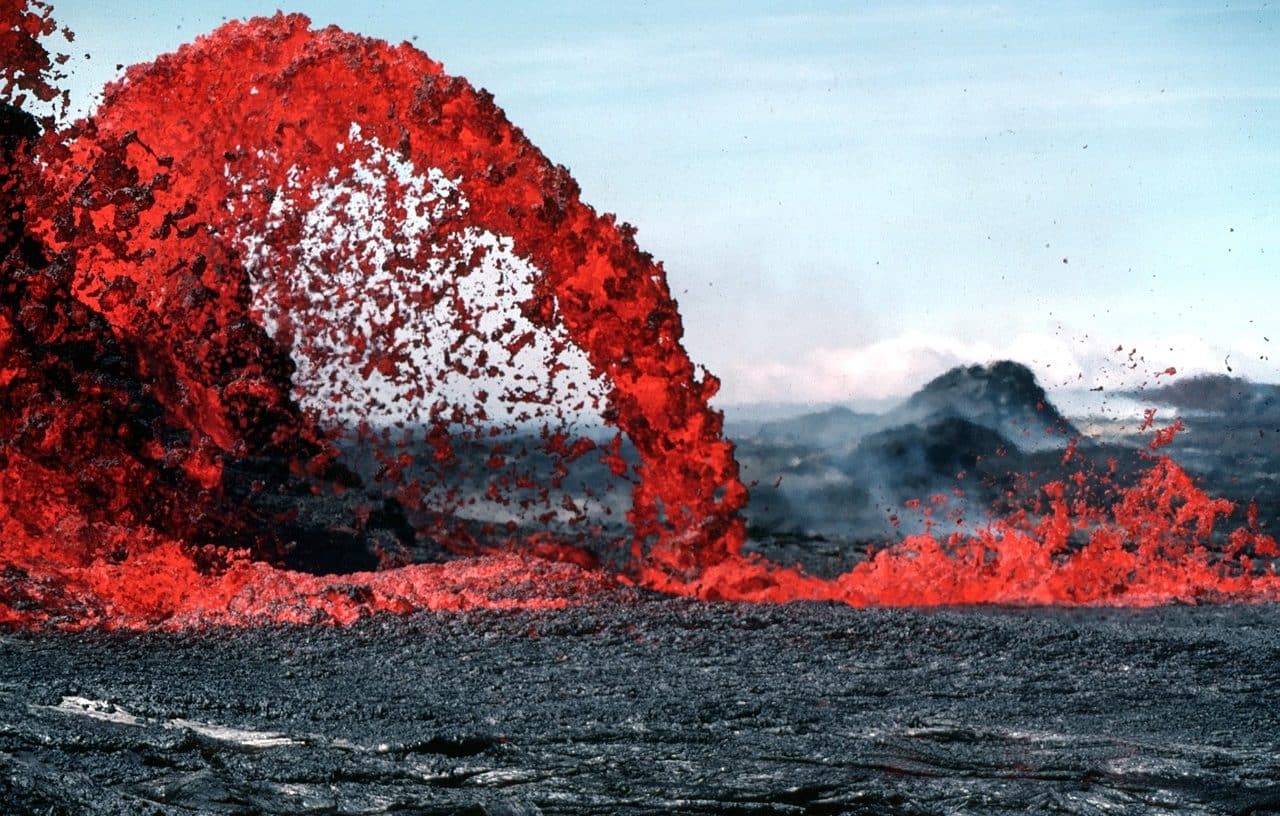
Lava is molten matter expelled by a volcano.
Lava is a concept with remote origins in the Latin language that is used to name the molten or molten matter that a volcano expels during its eruption . When lava is inside the Earth it is known as magma , while once it is expelled and solidified it is called volcanic rock .
It can be said that lava, therefore, is a magma that rises through the Earth's crust and reaches the surface. Atmospheric pressure causes the lava to lose the gases it contained inside the Earth . When it begins to travel over the earth's surface in the form of a stream, the lava has a temperature that ranges between 700ºC and 1,200ºC .
The viscosity of the lava is very high although, as it travels across the surface, this magma expelled by the volcano loses temperature and begins to solidify. The volcanic or igneous rocks that are generated with this solidification are often used in construction .
lava ejection
Typically, lava is expelled from a volcano with great violence and travels long distances like a fiery stream until it cools and solidifies. Lava lakes , which are permanent formations of molten lava found in a crater or depression , exist in only a few volcanoes around the world.
Other concepts linked to eruptions and volcanic activity are the lava flow (the mantle of magma that a volcano emits during the eruption) and lava tubes (tunnels that form inside a lava flow).
Volcanic eruptions cause a mix of sensations in many human beings, especially in those who do not have to experience them up close and see how they destroy their homes. In those who have only seen them through documentaries, they can generate a strange combination of fascination and terror ; and it is no wonder, since the lava seems to have come out of a fantasy story: it is a magical element, a sea of fire .

The lava eruption can be very violent.
The most important eruptions in history
Novarupta
It took place in Alaska in 1912 and the name of the volcano can be translated as "new eruption" . In the two days that the Novarupta eruption lasted, the volume of magma expelled was around 13 cubic kilometers. It all ended when a 360-meter-wide lava dome blocked the magma conduit.
Krakatoa
Between the islands of Sumatra and Java , in Indonesia , more precisely in the Sunda Strait, lies Krakatoa , a volcanic island . In 1883 , between the months of June and August, large columns of ash and steam were expelled from its volcano, which had exhibited intense seismic activity in previous years.
The island was practically destroyed by the explosions that took place on August 27 ; Its force and violence were such that the inhabitants of Perth and Rodriguez Island , 4,500 km and 4,800 km away respectively, heard them, and barographs continued to record the pressure wave of the last explosion five days later.
Drum
Also in Indonesia is Mount Tambora , an estravolcano (conical in shape and with considerable height, formed by several layers of hardened lava) that in 1812 was the subject of the most important eruption in recent history. Three years later, during which the volcano's activity intensified, a smaller eruption took place along with detonations that were heard 1,400 km away.
The entire mountain was transformed into a fluid mass of lava, and the pyroclastic flows descended towards the sea, without any mercy for the town.
